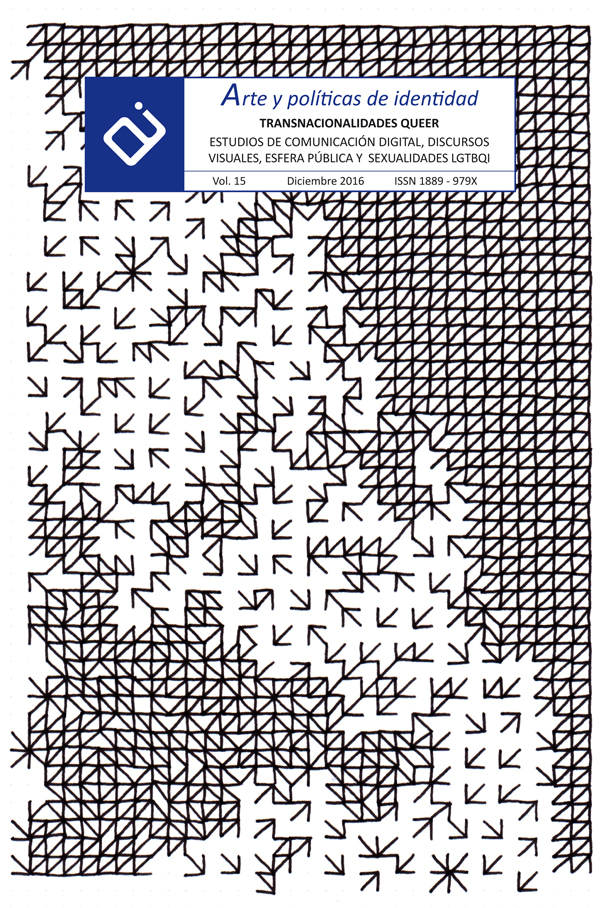Strategic Resistance to the Masculine Femininity in Apps of Socio/ Sexual Encounter between Males
“Sissy Boys to other Side”
Abstract
Throughout the text will explore some of the mechanisms that are deployed in the (re)production of the normative alignment of sex/gender/sexuality, in what a fiction of “should be” is sanctioned. It is essential to reveal the function of the gender grammar that operates in the configuration of masculinity and in the rejection of femininity in these virtual spaces. Using the information presented in the individual profiles, it will be possible to deepen the construction of masculinity in male homosexuals as well as the limitation of femininity in the public/private space as a constant tension, essential for the construction of identity. In this sense, it will be mentioned some of the resistance strategies – as adaptations- to the contemporary fluidity of masculine, that is, devices that are built around the consideration of emasculation provoked for the constitution of an effeminate subject.
Downloads
-
Abstract691
-
PDF (Español (España))533
References
Blackwell, C., Birnholtz, J. & Abott, C. (2014). Seeing and Being Seen: Co-situation and Impression formation using Grindr, a location-aware gay dating app. New Media and Society, 1-20.
Boscán Leal, A. (2008). Las nuevas masculinidades positivas. Utopía y Praxis Latinoamericana, 13(41), 93-106.
Bourdieu, P. (2000). La dominación masculina. Barcelona: Anagrama.
Butler, J. (1998). Actos performativos y constitución del género: un ensayo sobre fenomenología y teoría feminista, Debate feminista, 18(9), 296-314.
--- (2013). El género en disputa. El feminismo y la subversión de la identidad. Barcelona: Paidós.
Connell, R. W. (1992). A Very Straight Gay: Masculinity, Homosexual Experience, and the Dynimics of Gender, American Sociological Review, 57(6), 735-751.
--- (2005). Hegemonic Masculinity: Rethinking the Concept. Gender and Society, 19, 829-859.
Foucault, M. (1997). Los espacios otros. Astrágalo, 7: 83-91.
--- (2001). El sujeto y el poder. En L. H. Dreyfus & P. Rabinow. (Ed.), Michel Foucault: más allá del estructuralismo y la hermenéutica (241-260). Buenos Aires: Nueva Visión.
--- (2006). Historia de la sexualidad. (3 volúmenes). Madrid: Siglo XXI.François-Lyotard, J. (1988). La diferencia. Barcelona: Gedisa.
Guasch, O. (1991). La sociedad rosa. Barcelona: Anagrama.
Kimmel, M. S., Connell, R. W. & Hearn, J. (2005). Handbook of studies on Men and Masculinities. Londres: Sage
Landovitz, R. J., Tseng C. H., Weissman M., Haymer M., Mendenhall B., Rogers K. & Shoptaw S. (2013). Epidemiology, Sexual Risk Behavior, and HIV Prevention Practices of Men Who Have Sex With Men Using GRINDR in Los Angeles, California. Journal of Urban Health, 90 (4), 729-739.
Llamas, R. y Vidarte, F. J. (1999). Homografías. Madrid: Espasa.
Nash, M. (2006). Identidades de género, mecanismos de subalternidad y procesos de emancipación femenina. CIDOB d’Afers Internacionals, 73/74, 39-57.
Pecheny, M. (2002). Identidades discretas. En L. Arfuch (Ed.). Identidades, sujetos y subjetividades (131-153). Buenos Aires: Prometeo libros.
Rendina H. J., Jimenez R. H., Grov C., Ventuneac A. & Parsons J. T. (2014). Patterns of Lifetime and Recent HIV Testing Among Men Who Have Sex With Men in Ney York City Who Use Grindr. AIDS and Behavior, 18 (1), 41-49.
Rice E., Holloway I., Winetrobe H., Rhoades H., Barman-Adhikari A., Gibbs J. & Dunlap S. (2012). Sex Risk Among Young Men Who Have Sex With Men Who use Grindr, a Smartphone Geosocial Networking Application. Journal of AIDS and Clinical Research, 1-8.
Ridge, D., Plummer, D. & Peasley, D. (2006). Remaking the Mascculine Self and Coping in the Liminal World of the Gay Scene. Culture, Health & Sexuality, 8(6), 501-514.
Schippers, M. (2007). Recovering the Femenine Other: Masculinity, Femininity, and Gender Hegemony. Theory and Society. 36(1), 85-102.
Segal, L. (1993). Changing Men: Masculinities in Context. Theory and Society, 22 (5), 625-641.Segarra, M. & Carabí, A. (Eds). (2000). Nuevas Masculinidades. Barcelona: Icaria.
Williamson, I. R. (2000). Internalized Homophobia and Health Issues Afecting Lesbian and Gay Men. Health Education Research, 15 (1), 97-107.
Works published in this journal are subject to the following terms:
- The Service of Publications from the University of Murcia (publishing house) keeps the published works’ copyrights, and favors and allows the reuse of these works under the license indicated in point 2.
- Works are published in the journal’s online edition under the license Creative Commons Reconocimiento-NoComercial-SinObraDerivada 3.0 España(texto legal). They can be copied, used, disseminated, transmitted and publicly exhibited, as long as: i) the author and original source of publication are cited (journal, publishing house and work’s URL); ii) they are not used for commercial purposes; iii) the existence and specifications of this license are mentioned.
3. Conditions for auto-file. It is allowed and encouraged that authors share electronically their pre-print version (the pre-reviewed version) and /or post-print version (the reviewed and accepted version) of their Works before the publication, since it promotes its circulation and dissemination. RoMEO color: green.










